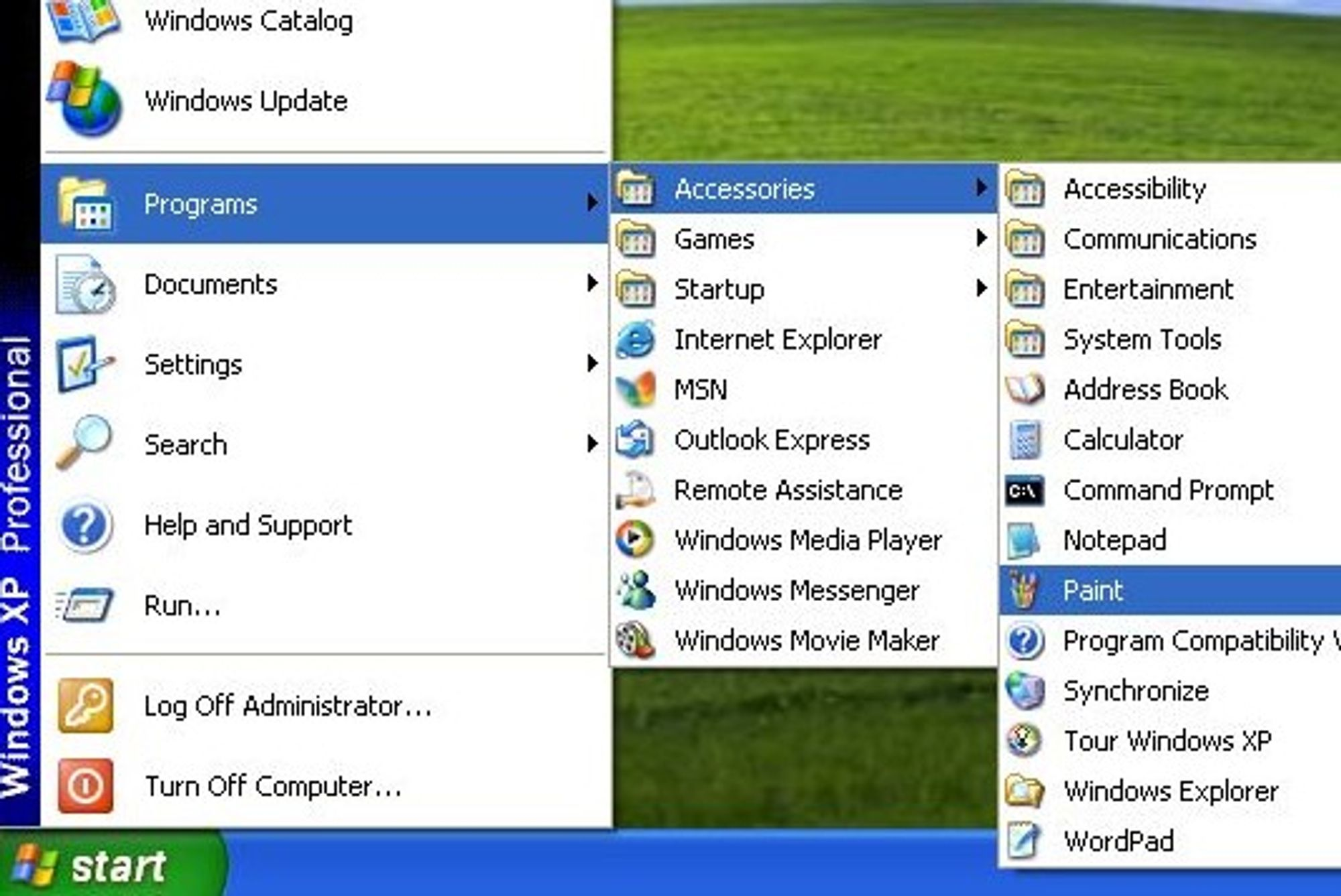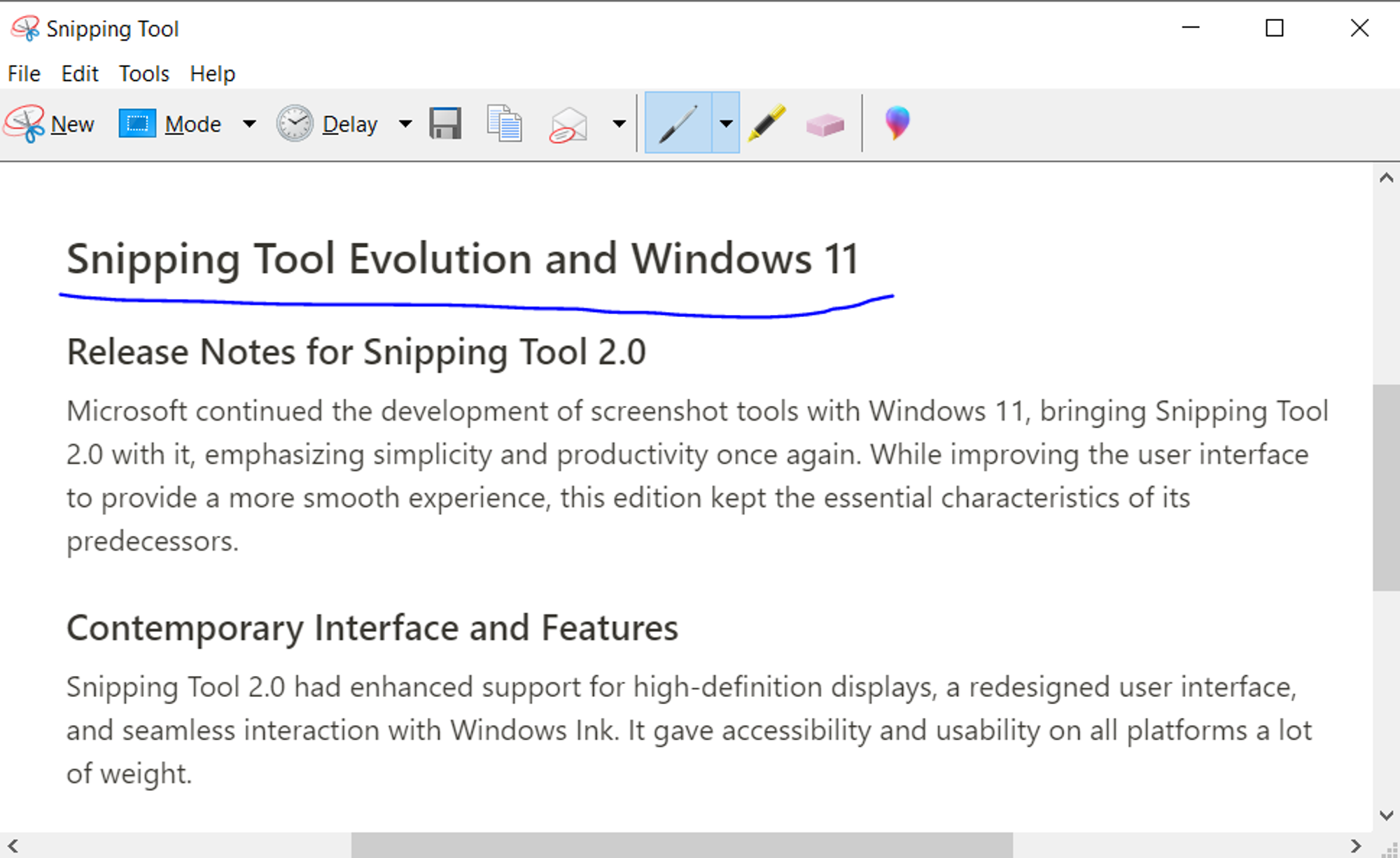With Windows operating systems, taking screenshots has changed throughout time in response to both user needs and technological developments. This article highlights significant updates and enhancements while offering a historical perspective on how Windows' screenshot features have changed over time.
Early Days of Screenshots
Screenshots in earlier Windows versions required the use of third-party applications or keyboard shortcuts. In order to take a picture of the complete screen and put it into an image editing software like Paint for editing and storing, users frequently depended on combinations like Print Screen (PrtScn).
The Birth of Snipping Tool
Windows XP's Snipping Tool: An Introduction
With the release of Snipping Tool in Windows XP, screenshot technology made a significant leap forward. Using a mouse or stylus, users may pick regions of the screen to record using this little instrument. It has simple annotation functions, and it gained popularity fast due to its user-friendliness.

Windows XP's Snipping Tool
Characteristics and Capabilities
Several snip kinds (Free-form, Rectangular, Window, and Full-screen) and simple editing tools (pen and highlighter for annotations) were the main features of Snipping Tool.
Updates in Windows Vista and 7
In subsequent versions like Windows Vista and 7, Snipping Tool received updates improving its performance and user interface. These updates enhanced usability and expanded its compatibility with different Windows applications.
Snipping Tool's Legacy and Criticisms
Despite its utility, Snipping Tool faced criticisms for its lack of advanced features such as delayed screenshots and cloud integration. Users often sought more sophisticated tools for professional use, leading to the search for alternatives.
The Rise of Snip & Sketch
Integration with Windows 10
Microsoft replaced Snipping Tool with Snip & Sketch in Windows 10. This integrated tool offered enhanced capabilities, including the ability to annotate screenshots directly and share them instantly.
Improvements Over Snipping Tool
By smoothly integrating into the Windows Ink Workspace and offering a more contemporary user experience, Snip & Sketch outperformed Snipping Tool. Users could modify screenshots before saving them, and keyboard shortcuts were available for faster access.
How to take screenshots on a Windows computers
You may use keyboard shortcuts like Win Key + PrtScn to take a screenshot of the full screen in Windows, or Alt + PrtScn to capture a screenshot of the active window. Software such as Snipping Tool or Snip & Sketch has more options for saving specific parts of the screen. You can read the full guide, How to take screenshots on a Windows computer, on the Screenpixel tool website.
Windows Ink Workspace
Including the Screen Sketch
Screen Sketch was also available in Windows 10 as part of the Windows Ink workspace. In addition to taking screenshots, users had the option of marking them using digital pens. Particularly helpful were those who utilized digital pens or other devices with touch screens.
The Introduction of Windows Snip
Features and Enhancements
Windows Snip, another addition to Windows’ screenshot tools, brought more versatility with features like timed screenshots and integrated sharing options. It aimed to streamline the process of capturing and sharing screenshots across different Windows applications.
User Reception and Adoption
Windows Snip received positive feedback for its intuitive design and enhanced functionality, further cementing Microsoft's commitment to improving user experience in Windows screenshot tools.
Snipping Tool Evolution and Windows 11
Release Notes for Snipping Tool 2.0
Microsoft continued the development of screenshot tools with Windows 11, bringing Snipping Tool 2.0 with it, which emphasized simplicity and productivity once again. While improving the user interface to provide a smoother experience, this edition kept the essential characteristics of its predecessors.
Contemporary Interface and Features
Snipping Tool 2.0 had enhanced support for high-definition displays, a redesigned user interface, and seamless interaction with Windows Ink. It gave accessibility and usability on all platforms a lot of weight.

Snipping Tool 2.0
Comparison with Third-Party Tools
Advantages and Disadvantages
While Windows' native screenshot tools have evolved significantly, users often compare them with third-party alternatives like Screenpixel. These tools offer advanced features such as cloud storage integration, extended annotation capabilities, and customizable shortcuts.
Individual Preferences and Personalization
Personal taste and particular use cases are generally the deciding factors when selecting between native tools and third-party alternatives. While some users like the flexibility and expanded functionality provided by third-party programs, others prefer the ease of use and integration of native tools.
Usability and Accessibility
Including Features for Accessibility
With new screenshot tools, Microsoft continues to put accessibility first, making sure that features like voice commands and keyboard shortcuts can accommodate those who may have disabilities. These improvements help create a computer environment that is more inclusive.
Enhancing User Experience
By focusing on user feedback and technological advancements, Microsoft aims to enhance the overall user experience with each iteration of Windows screenshot tools. This approach ensures that both casual users and professionals can efficiently capture and manage screenshots according to their needs.
Future Prospects and Innovations
Predictions for Windows 12
Looking ahead, the future of Windows screenshot tools is likely to embrace further integration with cloud services, AI-powered enhancements for image recognition and annotation, and improved cross-platform compatibility. These advancements aim to redefine how users interact with screenshots in a digitally connected world.
New Developments in the Screenshot Industry
New developments include seamless connection with augmented reality apps, intelligent content classification, and real-time screenshot collaboration. With these developments, screenshots might become dynamic tools for productivity and communication rather than just static pictures.
In summary
The development of screenshot tools in Windows OSs is indicative of Microsoft's dedication to improving accessibility and user productivity. Every version of Snipping Tool, from its fundamental functions to Windows Snip and Snip & Sketch's sophisticated capabilities, has taken user input and technology developments into account, opening the door to more user-friendly and adaptable screenshot experiences.
FAQs
How has the technology behind Windows screenshots changed over time?
From simple snapshot features in earlier versions of Windows to integrated applications like Snipping Tool, Snip & Sketch, and Windows Snip, these tools have developed throughout time. These tools provide enhanced usability, sophisticated editing features, and smooth interaction with other Windows programs.
What benefits come with making use of Windows' built-in screenshot tools?
Snipping Tool and Snip & Sketch are examples of native Windows screenshot utilities that seamlessly integrate with the operating system for compatibility and simplicity of usage. They offer simple to intermediate functionality for taking and altering screenshots right inside the Windows interface.
Can Windows screenshot tools be used for professional purposes?
While native Windows screenshot tools cater to basic screenshot needs, they may lack advanced features required for professional use, such as detailed annotation options or extensive cloud integration. Many professionals opt for third-party tools that offer enhanced capabilities tailored to specific workflow requirements.